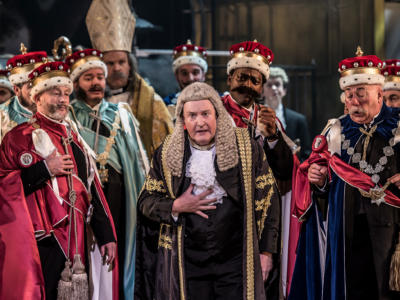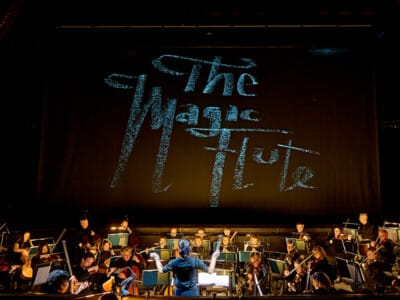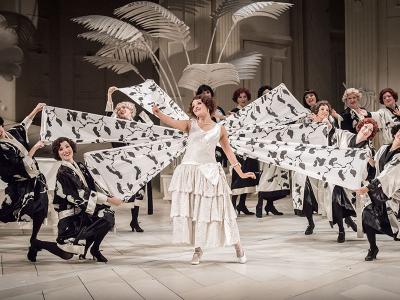Beginners Guide to Comic Opera
There are many genres of opera including comic opera. As the name suggests, comic operas were typically humorous and resulted in a happy ending. But did you know there are varying styles of comic opera in different European countries?
Here’s everything you need to know about comic opera, including where it comes from and why it’s so popular.
Comic Opera
Comic opera is a genre of opera developed in the 17th century. The operas within the genre usually feature humorous plots, comedic characters and happy endings. However, they do not always have to follow such a happy theme. If the opera contains spoken dialogue it could also be classed as a type of comic opera. There are many different sub-genres of comic operas that are typical to a certain place or country. Each has their own different stylings and set of composers who made the sub-genre famous.
Comic operas remain popular amongst audiences today due to their accessible nature. The spoken dialogue makes comic operas much more like musicals which birthed a new genre known as operettas. Operettas are great for first time opera goers because they are typically easier to follow and more light hearted and family friendly – perfect for those looking for a great night out at the opera.
Opera Buffa (Italy)
Italy is thought to be the birthplace of comic opera as a stand alone opera genre. It was originally intended to be an intermezzi – a form of light relief that broke up two serious pieces of work. However, the comedy elements became so popular that they were built out into longer, operatic pieces of their own known as opera buffa.
Cosi Fan Tutte is just one of the many examples of Mozart’s opera buffa. Its fairground setting is a reflection of the fun and games the characters will experience in their relationships. Like many other comic operas, the humour is at the expense of the characters who are often misled, confused and placed in absurd situations.
Other notable opera buffa composers include Gioachino Rossini and Giuseppe Verdi. The Barber of Seville is not only one of Rossini’s most famous operas, but one of the most popular examples of an opera buffa, based on Pierre Beaumarchais’s French comedy Le Barbier de Séville. Verdi’s notable works include Falstaff, which similar to Cosi Fan Tutte is based on a play by Shakespeare, who of course was also prevalent in the comedy genre.
Video
Singspiel (Austria /Germany)
Comic opera spread to Austria and Germany where another new sub-genre was born known as Singspiel. Singspiel is a form of German music drama – an opera structured by dramatic effect made popular by Richard Wagner. It’s made up of different styles from spoken dialogue to arias and ballards and the plots are typically comical, romantic and fantastical.
German composer John Adam Hiller is considered the creator of Singspiel, however Mozart was by far the most famous composer of the genre. His opera, The Magic Flute, is considered one of the best examples of Singspiel of all time. True to the genre, it features one of the most popular arias in the repertoire, ‘The Queen of the Night’ aria. It’s also a love story intertwined with magic and fantasy which helps to firmly secure its Singspiel status.
Video
Opéra Comique (France)
Opera comique was the form of ‘comic opera’ popularised in France. It’s name was derived from a theatre of the same name in Paris. However, unlike other forms of comic opera, works did not necessarily have to be humorous to be classed as ‘opera comique’. Instead, they could be dramas or even serious operas as long as they featured spoken dialogue and arias. For example, George Bizet’s Carmen is one of the most popular examples of an opera comique, even though it is a tragic love story.
This led to sub sections of the opera comique genre forming. One sub-genre of particular note was the opéra bouffe – a style of French operetta prominent in the 19th century. Jacques Offenbach was the leading exponent of operetta – a mix between a musical and an opera. However, Offenbach’s operettas kept true to their comic opera roots by featuring humorous plots, satire and parodies.
Video
Gilbert and Sullivan Comic Opera
The last stop on Comic Opera’s world wind trip around Europe is England. Like the other nations, England had its own version of comic opera known as ballad opera – a comedic play set to popular songs.
In the 19th century there was only one operatic duo dominating the British comic opera scene and that was Gilbert and Sullivan. They were part of Richard D’Oyly Carte’s vision to create a lighter, more accessible opera. Their first attempt at a Comic Opera, ‘Trial by Jury’, kicked off a series of famous operas that would become known as the Savoy Operas, after the theatre they were premiered in. These works include world renowned Comic Operas like Iolanthe, HMS Pinafore, The Pirates of Penzance and The Mikado, all of which are still beloved today.
Video



